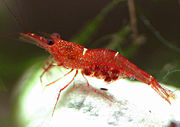The fabled island of Sulawesi is shaped like a tropical orchid, each "petal" a peninsula, ridged with lofty mountains and surrounded by coral reefs.
The Island is Indonesia's third-largest island, with an area of 172,000 square km. Like all of Indonesia there is much cultural diversity here comprised of four major ethnic groups. It truly is a delightful potpourri of people and cultures ranging from the mysterious Toraja, who live in the mountainous center of the Sulawesi orchid, to the friendly folk of the lush northern region of Manado-Minahasa. The intriguing Bugis and Makassarese people from peninsular South Sulawesi are the stuff legends are made of. (The 'bogey' man of our childhood fears is rumoured to have started his career as a Bugis pirate!).
The topographical variety is complete, offering spectacular mountains, scenic coastline, lakes, rice patties, and dense jungles making Sulawesi one of the few islands where a traveler can experience such cultural and marine diversity without having to travel to another country.
Sulawesi straddles Wallace's Line meaning that it has a mix of both Asian and Australasian species. However, the majority of Sulawesi's wildlife belongs to the Australasia region. 2,290 km² of the island is devoted to Lore Lindu National Park.
There are 127 known mammalian species in Sulawesi. A large percentage of these mammals, 62% (79 species) are endemic, meaning that they are found nowhere else in Indonesia or the world. The largest native mammal in Sulawesi is the dwarf buffalo, locally known as the anoa. Other mammalian species inhabiting Sulawesi are the babirusa, a pig-like animal, the Sulawesi palm civet, several species of cuscus (S. rufoniger, S. celebensis and A. ursinus), and primates including a number of tarsiers (the spectral, Dian's, Lariang and pygmy varieties) and several species of macaque, including the crested black macaque, the moor macaque and the booted macaque.
By contrast, because many birds can fly between islands, Sulawesian bird species tend to be found on other nearby islands as well, such as Borneo; only 34% of Sulawesi's birds are found nowhere else. One endemic bird is the largely ground-dwelling, chicken-sized maleo, which reproduces like no other bird: taking advantage of the hot sand produced by the island's volcanic vents, they dig holes in the sand, lay their eggs, and promptly leave the scene. There are known 1450 bird species in Sulawesi. The Togian White-eye is another endemic that was described in 2008. An international partnership of conservationists, donors, and local people have formed the Alliance for Tompotika Conservation, in an effort to raise awareness and protect the nesting grounds of these birds on the central-eastern arm of the island.
A Djampea Rainbow
Sulawesi also has several endemic species of freshwater fish, such as those in the genus Nomorhamphus, a species flock of livebearing freshwater halfbeaks containing at least 19 distinct species, most of which are only found on Sulawesi.
There are also many species of freshwater shrimp that are endemic to Sulawesi. Several of these species have become very popular in the aquarium hobby. They are considered some of the most beautiful freshwater shrimp species to be found and are not found anywhere else in the world. Several of these shrimp species are found only in specific lakes in Sulawesi, making them even more rare .
Orange Delight Shrimp
Freshwater snails endemic to Sulawesi are also extremely beautiful and like the shrimp are endemic to Sulawesi . The snails and shrimp from Sulawesi have made a wonderful addition to the freshwater aquarium invertebrate hobby. However, there must be careful attention placed to conserve and protect these species as well as many others. Due to the small habitat and unique environment it is critical that all freshwater species from Sulawesi be conserved properly. An expedition was conducted by Mimbon Aquarium to the island of Sulawesi to document and collect some of the species of fish, shrimp and snails mentioned. There are several photos of the landscape, underwater habitat and some of the collected specimens from the expedition journal.
The island was recently the subject of an Ecoregional Conservation Assessment, coordinated by the Nature Conservancy. Detailed reports about the vegetation of the island are available. The assessment produced a detailed and annotated list of 'conservation portfolio' sites . This information was widely distributed to local government agencies and non governmental organizations. Detailed conservation priorities have also been outlined in a recent publication.
The lowland forests on the island are, unfortunately, almost gone. Because of the relative geological youth of the island and its dramatic and sharp topography, the lowland areas are naturally limited in their extent. The past decade has seen dramatic conversion of this rare and endangered habitat. The island also possesses one of the largest outcrops of Serpentine soil in the world, which support an unusual and large community of specialized plant species. Overall, the flora and fauna of this unique center of global biodiversity is very poorly documented and understood and remains critically threatened.
Sulawesi is the world's eleventh-largest island, covering an area of 174,600 km². The island is surrounded by Borneo to the west, by the Philippines to the north, by Maluku to the east, and by Flores and Timor to the south. It has a distinctive shape, dominated by four large peninsulas: the Semenanjung Minahassa; the East Peninsula; the South Peninsula; and the South-east Peninsula. The central part of the island is ruggedly mountainous, such that the island's peninsulas have traditionally been remote from each other, with better connections by sea than by road.
The island is subdivided into six provinces:
Gorontalo
West Sulawesi
South Sulawesi
Central Sulawesi
Southeast Sulawesi
North Sulawesi
West Sulawesi is a new province, created in 2004 from part of South Sulawesi. The largest cities on the island are Makassar, on the southwestern coast of the island, and Manado, on the northern tip.
Langganan:
Posting Komentar (Atom)


Tidak ada komentar:
Posting Komentar